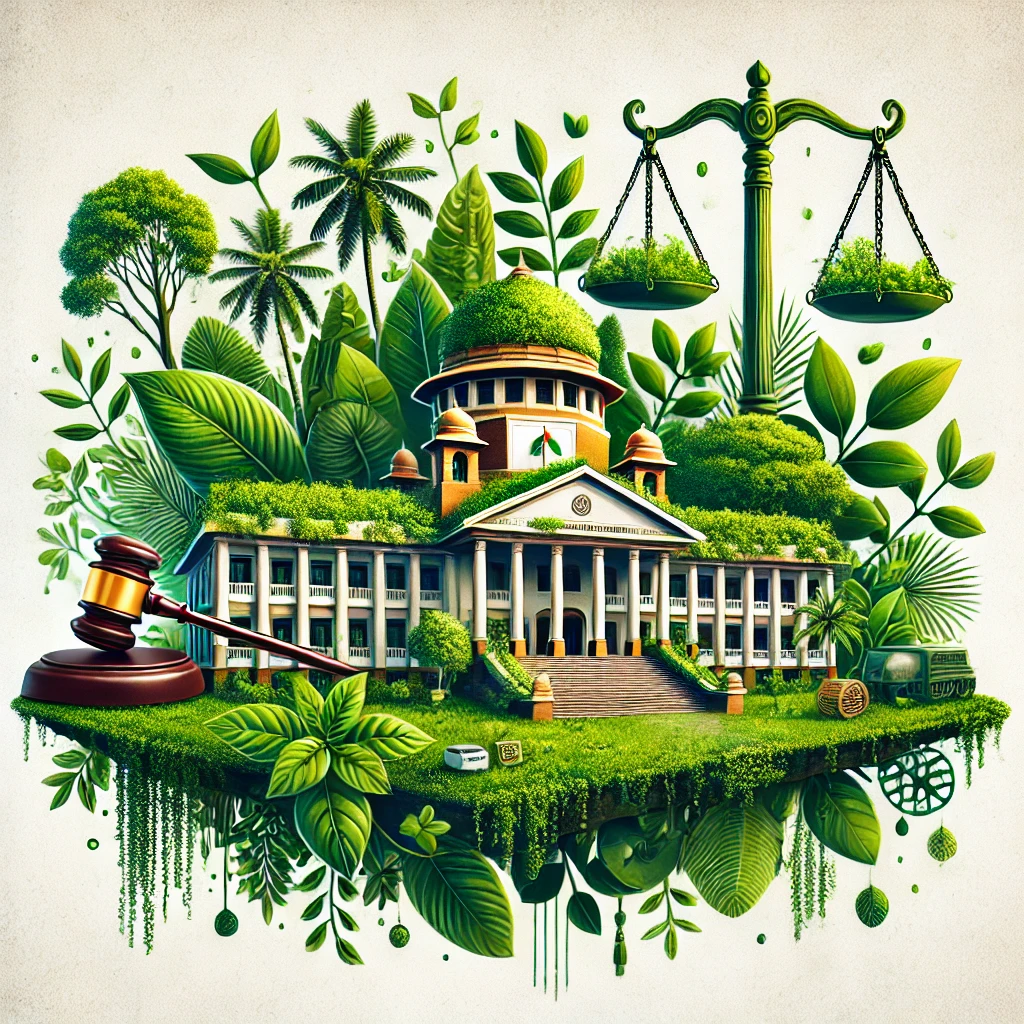Environmental laws at Kyrgyzstan
Kyrgyzstan has made significant strides in developing environmental legislation, recognizing the importance of protecting its natural resources and addressing environmental challenges. As a country rich in biodiversity and natural landscapes, including mountains, forests, and water resources, Kyrgyzstan has established various laws and regulations to protect its environment. Below is an overview of the key environmental laws and regulations in Kyrgyzstan:
1. Constitution of Kyrgyzstan (2010)
The Constitution of Kyrgyzstan provides the foundation for environmental protection in the country. While it does not explicitly mention environmental protection, it lays the groundwork for the protection of citizens' rights, which includes a healthy environment.
Key points:
Right to a Healthy Environment: Citizens are entitled to live in a healthy environment, and the state is responsible for ensuring environmental protection and sustainable development.
Sustainable Development: The Constitution outlines the state’s commitment to protecting natural resources and ensuring sustainable development for future generations.
2. The Law on Environmental Protection (1999)
The Law on Environmental Protection (No. 53 of 1999) is the cornerstone of Kyrgyzstan's environmental legislation. It sets the general framework for environmental management, protection, and sustainable use of natural resources.
Key provisions include:
Environmental Protection Principles: The law establishes the fundamental principles for environmental protection, such as sustainability, integration of environmental considerations into economic and social policies, and the participation of citizens and communities in environmental decision-making.
Pollution Control: It regulates the prevention and reduction of pollution in air, water, and soil, and emphasizes the need for maintaining ecological balance.
Natural Resource Management: The law mandates sustainable management of natural resources, including land, water, and forests.
Environmental Impact Assessment (EIA): Projects that could have significant environmental impacts must undergo an Environmental Impact Assessment (EIA).
3. The Law on Air Protection (1999)
The Law on Air Protection (No. 58 of 1999) addresses air quality and pollution control in Kyrgyzstan. Given the country’s industrial development and urbanization, this law is important for managing air pollution.
Key provisions include:
Air Quality Standards: The law establishes standards for air quality and sets limits for pollutants such as sulfur dioxide (SO2), nitrogen oxides (NOx), particulate matter (PM), and carbon monoxide (CO).
Pollution Control: It requires industries, transportation, and other sources of pollution to comply with emission standards and take measures to reduce harmful air emissions.
Monitoring: The law provides for the monitoring and measurement of air quality, with the creation of air quality monitoring networks to assess pollution levels.
4. The Law on Water (2005)
The Law on Water (No. 67 of 2005) regulates the management and protection of water resources in Kyrgyzstan. Given the country’s reliance on rivers, lakes, and glaciers for its water supply, the law plays a crucial role in water conservation and management.
Key provisions include:
Water Resource Management: The law ensures the rational use, protection, and sustainable management of water resources. It regulates water usage for agriculture, industry, and domestic purposes.
Pollution Prevention: It prohibits the pollution of water bodies, including rivers, lakes, and groundwater, and requires wastewater treatment before discharging it into water sources.
Water Quality Standards: The law establishes standards for water quality to safeguard public health and preserve aquatic ecosystems.
Water Licensing: It requires licenses for activities that involve the extraction or use of water.
5. The Law on Forests (2001)
The Law on Forests (No. 68 of 2001) provides the legal framework for the management, conservation, and sustainable use of forests in Kyrgyzstan, which covers a significant portion of the country’s land area.
Key provisions include:
Forest Conservation: The law aims to protect forests from deforestation, degradation, and illegal logging, while promoting sustainable forest management.
Forest Regeneration: It encourages reforestation and afforestation efforts to restore degraded forest areas.
Biodiversity Protection: The law integrates biodiversity conservation into forest management, protecting forest ecosystems and wildlife habitats.
Forest Exploitation Regulations: It sets rules for forest exploitation, including licensing requirements for logging and other forest-based activities.
6. The Law on Biodiversity (2008)
The Law on Biodiversity (No. 58 of 2008) was adopted to address the need for biodiversity conservation and the sustainable use of biological resources.
Key provisions include:
Conservation of Species and Habitats: The law aims to protect Kyrgyzstan’s rich biodiversity, including endangered species, ecosystems, and genetic resources.
Protected Areas: It provides for the establishment of protected areas, including nature reserves and national parks, to preserve biodiversity.
Sustainable Use: The law promotes the sustainable use of biological resources, including sustainable agriculture, forestry, and wildlife management practices.
International Cooperation: Kyrgyzstan is a signatory to the Convention on Biological Diversity (CBD), and the law aligns with the country's international commitments to biodiversity protection.
7. The Law on Waste Management (2001)
The Law on Waste Management (No. 93 of 2001) governs the handling, disposal, and treatment of waste in Kyrgyzstan. It addresses both industrial and household waste, as well as hazardous materials.
Key provisions include:
Waste Classification: The law defines various types of waste, including municipal, industrial, hazardous, and medical waste, and provides guidelines for the management of each category.
Waste Treatment and Disposal: It outlines the processes for waste treatment, including recycling, composting, and safe disposal in designated landfills.
Pollution Prevention: The law emphasizes the prevention of waste-related pollution, requiring industries to reduce waste generation and adopt cleaner technologies.
Public Awareness: The law promotes the education of citizens and industries on waste reduction and recycling.
8. The Law on the Use of Chemicals (2005)
The Law on the Use of Chemicals (No. 93 of 2005) regulates the import, sale, and use of chemicals, including pesticides and fertilizers, to prevent their harmful effects on the environment and human health.
Key provisions include:
Chemical Safety: The law sets regulations for the safe handling, transportation, and disposal of chemicals, particularly those that are hazardous to health or the environment.
Public Health Protection: It ensures that chemicals used in agriculture or industry do not harm public health or contaminate the environment.
Import Restrictions: The law places restrictions on the import of certain hazardous chemicals and sets safety standards for those that are allowed in the country.
9. The Environmental Impact Assessment (EIA) Law (2005)
The Environmental Impact Assessment (EIA) Law (No. 53 of 2005) requires developers and project promoters to conduct an EIA for projects that may have significant environmental effects.
Key provisions include:
EIA Requirement: The law mandates that certain projects, such as infrastructure developments, mining operations, and industrial projects, must undergo an environmental impact assessment before they can proceed.
Public Participation: It encourages public participation in the EIA process, ensuring that affected communities have a voice in decision-making.
Mitigation Measures: The law requires developers to implement measures to avoid or mitigate the environmental impacts of their projects.
10. The Law on the Protection of Nature (1999)
The Law on the Protection of Nature focuses on preserving Kyrgyzstan's natural landscapes, including mountains, rivers, forests, and wildlife.
Key provisions include:
Protected Areas: The law facilitates the creation of nature reserves, parks, and other protected areas to conserve the country's unique landscapes and biodiversity.
Sustainable Resource Use: It encourages sustainable use of natural resources while minimizing environmental degradation.
Eco-tourism: The law promotes eco-tourism in protected areas as a means of generating revenue while preserving nature.
11. International Environmental Agreements
Kyrgyzstan is a party to various international environmental agreements, such as:
The Paris Agreement: Kyrgyzstan has committed to reducing greenhouse gas emissions and implementing climate change mitigation strategies.
The Convention on Biological Diversity (CBD): The country works toward the conservation and sustainable use of its biodiversity.
The Ramsar Convention: Kyrgyzstan is involved in the protection of wetland ecosystems under the Ramsar Convention.
The United Nations Framework Convention on Climate Change (UNFCCC): Kyrgyzstan participates in international efforts to address climate change.
Enforcement and Challenges
Enforcement: The State Environmental Protection Agency (SEPA) under the Ministry of Ecology and Natural Resources is responsible for enforcing environmental laws and regulations. This includes monitoring pollution levels, managing protected areas, and ensuring compliance with EIA requirements.
Challenges:
Pollution: Air and water pollution from industrial activities and agriculture remain significant challenges.
Deforestation: Unsustainable logging and land degradation threaten the country’s forests.
Water Scarcity: Kyrgyzstan faces challenges in managing its water resources, especially with increasing demand and the impact of climate change.
Waste Management: Proper disposal and recycling of waste remain issues, especially in urban areas.
Conclusion
Kyrgyzstan has a relatively well-developed environmental legal framework that addresses a broad range of issues, from pollution control and water management to biodiversity conservation and waste management. However, enforcement of these laws and regulations remains a challenge due to limited resources, and the country faces ongoing environmental challenges related to pollution, water scarcity, and land degradation. Continued development of environmental policies, strengthening of enforcement mechanisms, and public awareness campaigns are crucial for improving the environmental situation in Kyrgyzstan.




























0 comments